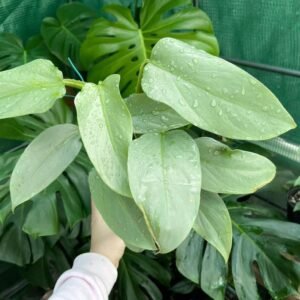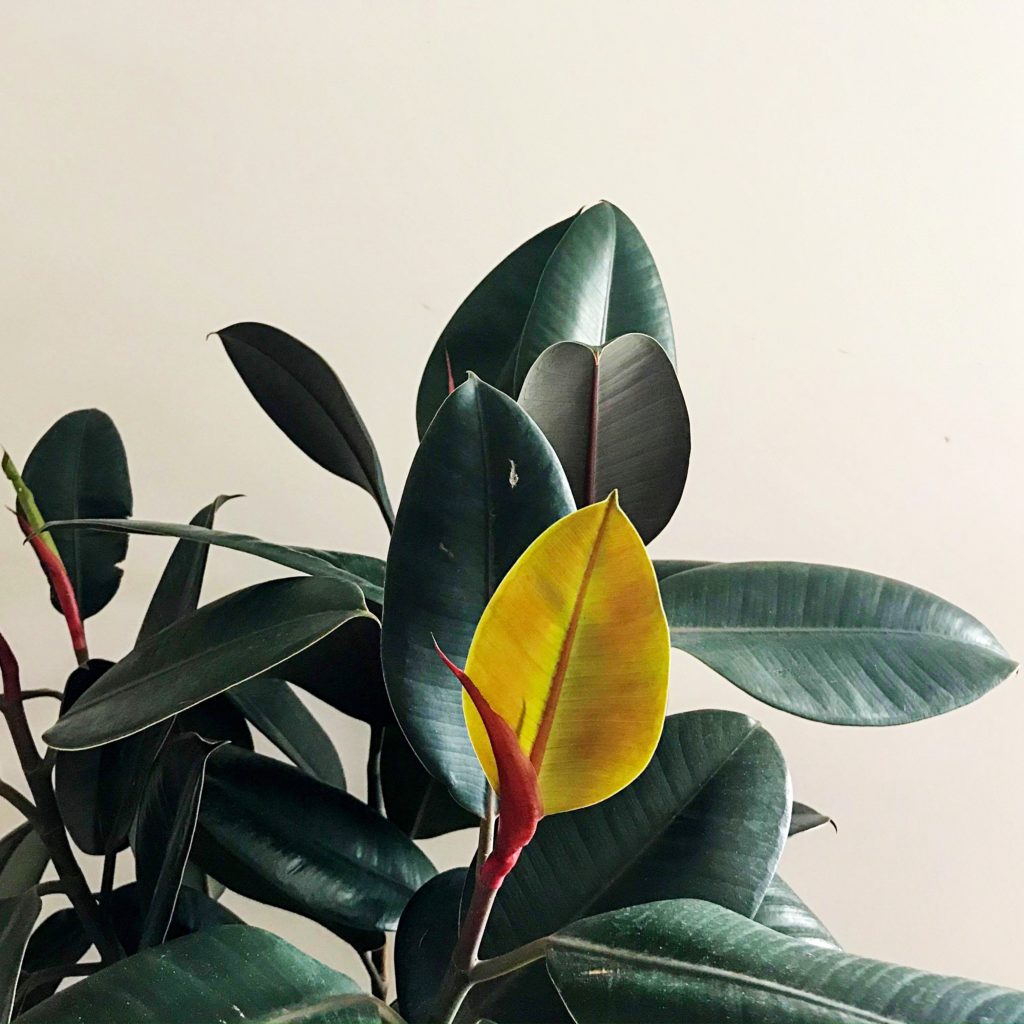Philodendron Hastatum a.k.a Philodendron Silver Sword
The Philodendron Hastatum has long, silver, sword like shaped leaves which is where it gets its nickname “Silver Sword” from. This plant is part of the Araceae family and originates from rainforests in Brazil. This unique Philodendron likes to climb and can grow metres high when kept in the right growing conditions. Like all Philodendron, this plant is toxic and should be kept away from pets and children.

Philodendron Silver Sword Quick Overview
| Full Size | Up to 3 metres tall |
| Light | Bright indirect |
| Temperature | 65ºF – 80ºF (18ºC – 26ºC) |
| Humidity | Moderate – high (50% – 85%) |
| Cost | $ |
| Care Level | Easy |
| Toxicity | Toxic |
Size
Philodendron Silver Sword is a climbing plant that will require a pole for support and for climbing up. This plant is quite a fast grower and you can expect it to grow quite large. These plants can grow up to 3 metres tall and 1.5 metres wide when kept in the right conditions.
Philodendron Silver Sword Light Requirements
Philodendron Silver Sword grow best when positioned in bright indirect lighting. However, these plants can also tolerate low light conditions. The leaves of your plant can burn and turn yellow if the plant receives too much direct sun. It is best to keep your Philodendron Silver Sword in a spot near a sunny window so it’s getting enough bright indirect light, but not direct sunlight.
If your plant isn’t receiving adequate lighting, the stem will become leggy and the foliage will grow smaller. Placing your plant in a spot with brighter lighting will encourage your Silver Sword to grow thicker, larger leaves and will assist in keeping a healthy plant.
Temperature
Philodendron Silver Sword will grow best when kept in a spot that maintains a temperature of 65ºF – 80ºF (18ºC – 26ºC) during the day and around 60ºF (15ºC) during the night. Being native to rainforests where the temperatures are warm and humid, this plant doesn’t really tolerate cold conditions therefore, during the cooler months, it’s best to keep your plant inside to prevent it being damaged from frost.
Humidity
Since Philodendron Silver Sword are native to rain forests, these plants will thrive in a high humidity environment. However, they can also tolerate an average household humidity (30%-50%). If your plant is housed in a spot that has a lower humidity level, you may notice the leaves becoming droopy and yellow. Luckily, there are a few easy things that you can do to bump up the humidity in your home.
Providing high humidity for your plants will encourage bigger and healthier growth. Some of the ways you can bump up the humidity in your home without having to use a humidifier are:
- Misting your plants
- Using pebble trays
- Grouping plants together
You can read more about increasing humidity in your home here.
Philodendron Silver Sword Watering Requirements
Philodendron Silver Sword are fairly easy to care for, however, you want to avoid over-watering your plant. Before you water your plant, you should check the soil. If you stick your finger about 2 inches in the soil and it still feels moist, you should avoid watering until the soil becomes more dry. Waiting until the top 2-3 inches of soil is dry before watering will help to prevent over-watering. You also need to ensure your plant has proper drainage. Providing adequate drainage with a well draining soil will assist in avoiding diseases like root-rot.
Your Philodendron will begin to get droopy leaves if it isn’t receiving the correct amount of water but don’t stress, your plant will recover quite quickly once it’s watered. Browning or yellowing leaves can be a sign of over-watering. You should also wipe the leaves of your Silver Sword to help keep them clean and shiny. Clean leaves not only clear the plants pores, it also helps them absorb more light.
Fertilizing requirements
You should fertilize your Philodendron Silver Sword monthly during the warmer months (Spring and Summer). However, you should slow the fertilizing down to about every 8 weeks during the cooler months (Winter and Autumn) when your plant is no longer actively growing. Fertilizing your plants will give them the essential nutrients they need for promoting and maintaining new and healthy growth.
The best fertilizer to use would be an all purpose one that contains micronutrients as well as macronutrients (NPK). Philodendron need magnesium and calcium in order to grow their best. Without those key nutrients, the foliage will be pale in colour.
Another thing you need to look out for when fertilizing your house plants is over-fertilizing. Over feeding your plants can cause burning to the roots and foliage, as well as wilting and yellowing leaves. Remember, less is more. It’s also recommended to dilute your fertilizer to half strength. You can find out more about fertilizing indoor plants here.
Soil Requirements
Philodendron Silver Sword prefers a loose, well draining soil that is high in organic matter. These plants like the soil to be moist but not wet. Having constantly wet soil causes the plant to become waterlogged which then leads to root-rot and we don’t want that. To achieve a good, well-draining soil, you can use orchid bark potting mix with perlite and peat mixed into it to help create better aeration. You can even just add perlite to whatever potting soil you already have at home to help improve drainage.
Diseases & Pests
The Philodendron Silver Sword is generally pretty resilient to pests and diseases however, there are some you should look out for. The most common pests you may encounter are Thrips, Mealybugs and Spider Mites. The common diseases that you may encounter are root-rot and leaf spot. For a wide range of information on combating a range of indoor plant pests and diseases click here.
There are a few things you can do that will assist in preventing any pest infestations. These things are:
- Checking new plants for pests or isolating new plants for up to a week.
- Check your plants every few days for pests.
- Trim off any dead or dying leaves.
- Wipe down leaves if you notice them getting dusty.
- Keeping your plants healthy. A healthy plant will be able to handle an infestation better than those that aren’t as happy.
- Isolate any plants that have pests.
Following this will assist in keeping pests away as well as catch them early on before any severe infestations are able to start. Keeping plants healthy and in the correct living environments can help to deter any pests from invading your plants.
Toxicity
Philodendron Silver Sword is toxic to both humans and animals if ingested. To be safe, you should keep this plant out of reach from children and pets.



